| |
|
No
Smoke !!
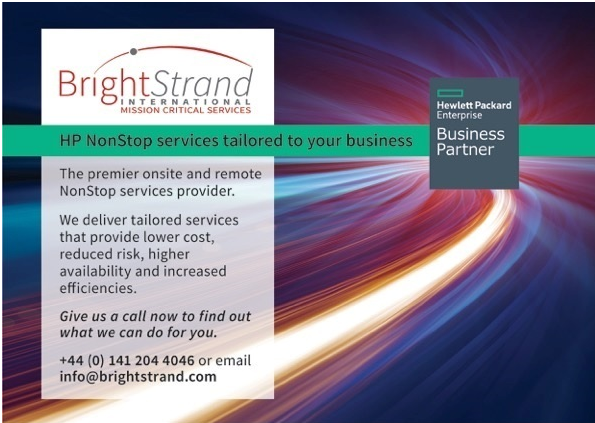
No smoke, no mirrors, no snake oil.
Just NonStop Services to suit you
www.brightstrand.com
Open
Banking Isn't Just for the EU Anymore
Companies
around the world are now embracing open banking, but if you haven't made
the leap yet, there is still time to catch up.
The move to open banking is quick and painless with REST technology from
NuWave.
Learn how to be an open banking innovator at www.nuwavetech.com/open-banking-innovators.
For more innovative ideas, like connecting to API gateways, subscribe to
the NonStop
Innovations blog and NuWave's
YouTube channel
Availability Digest Discusses Swapping Replication Engines with ZDM
A mission-critical application often runs in redundant systems to
ensure it is always available to its users. Such a system may be
configured as an active/passive pair, in which one system runs the
production workload while the other system is standing by, ready to take
over application processing should the production system fail.
Alternatively, the system may be configured as an active/active
architecture, in which both systems are processing transactions. The
databases are kept synchronized via bidirectional replication.
Sometimes, companies may decide to change data replication engines or to
upgrade to a new version of the existing data replication engine. With
mission-critical applications, it is necessary to do so without taking
down the applications – a zero downtime migration (ZDM). Furthermore, it
is imperative that a backup copy of the database is always available,
ready to take over if the production database fails. The backup database
must be kept synchronized with the production database while the data
replication is being migrated.
In this three-part series, we describe how a data replication engine can
be changed without taking down either applications or the backup
database.
“Swapping Replication Engines with ZDM” is one of several articles in
recent issues of the Availability Digest. In addition to this story,
read the articles below as well as others.
Hyper-Availability – First came high availability. Then continuous
availability. Now there is hyper-availability. The logic behind its
creation is that today’s enterprises control data that moves fluidly
across not just one or more physical data centers but also across
virtual data centers, public clouds, and countless applications. No
longer does availability need to be just continuous, or “always on.”
Today’s new technologies - AI, IoT, Virtual Reality, etc. - challenge
the ability of companies to manage their data seamlessly as well as
making it continuously available across numerous applications and
infrastructures. That goal requires massive speed, agility, and
scalability, and that is hyper-availability.
Facebook Breach of 30 Million Users – Facebook is still reeling from its
Cambridge Analytica scandal, in which a UK-based digital consultancy
harvested the personal data of 87 million Facebook users. Now comes new
doubts about Facebook’s ability to protect data. Recently, threat actors
successfully stole access tokens belonging to 30 million Facebook user
accounts. The access token is a set of code granted to a user after (s)he
logs in for the first time so that the user does not need to log back in
every time (s)he goes to a new Facebook page.
California Utilities Kill Power to Prevent Wildfires – The U.S. State of
California has an unfortunate history of wildfires being caused by
sparks from downed power lines during California’s notorious high-wind
conditions. As a result, power utilities have begun to respond to
elevated fire risks by cutting power to customers. In Northern
California, Pacific Gas & Electric (PG&E) cut power to tens of thousands
of its customers after meteorologists warned of extreme fire dangers due
to high winds, low humidity, and dry vegetation. San Diego Gas &
Electric did the same.
The Availability Digest offers one-day and multi-day seminars on High
Availability: Concepts and Practices. Seminars are given both onsite and
online and are tailored to an organization’s specific needs. Popular
seminars are devoted to achieving fast failover, the impact of
redundancy on availability, basic availability concepts, and eliminating
planned downtime.
The Digest provides a variety of technical writing, consulting,
marketing, and seminar services. Individuals too busy to write articles
themselves often hire us to ghostwrite. We also create white papers,
case studies, technical manuals and specifications, RFPs, presentation
slides, web content, press releases, advertisements, and so on.
Published monthly, the Digest is free and lives at
www.availabilitydigest.com. Please visit our Continuous Availability
Forum on LinkedIn. We are at 806 members and counting. Follow us as well
on Twitter @availabilitydig.
Gravic Presents at Connect HPE NonStop Technical Boot
Camp

We greatly enjoyed the 2018
Connect HPE NonStop Technical Boot
Camp (TBC)
held November 11-14 at the Hyatt Regency San Francisco Airport Hotel
and spending time with so many of you.
We
shared ideas regarding how the HPE Shadowbase product suite can provide
solutions to your most pressing business issues for business continuity,
data integration and synchronization, and application integration
purposes.
We thank Connect and the HPE staff for hosting a terrific gathering.
HPE Shadowbase was featured in several presentations:
-
HPE Business Continuity Product Suite Update,
Mark Pollans and Paul J. Holenstein, HPE and Gravic
HPE Shadowbase Updates and Enterprise Use Cases,
Paul J. Holenstein and Paden R. Holenstein, Gravic
Case Study: Golden 1 Credit Union Improves its BASE24 Classic™
Application Availability by Upgrading to an HPE Shadowbase
Sizzling-Hot-Takeover Solution, Sean
O’Banion and Carolyn Vaughan, Golden 1
Recovering a DR Site Using Shadowbase Tricks,
Rick Stather, TCM
HPE-J/Japan Session – Gravic and
NuWave Technologies, Paden R.
Holenstein and Andrew Price
If you are interested in discussing our presentations’ content or
would like us to present these or other HPE Shadowbase topics to your
staff, please
contact us.
Prior to the TBC, we also enjoyed
co-sponsoring a Partner Technical Update (PTU) for HPE Sales, Technical
Services, and Solution Architects,
and plan to replicate that experience at other upcoming worldwide
events. If you attended a PTU this year, please share your feedback with
us so that we can hone our message and material going forward.
To speak with us about your
data replication and data integration needs, please call us at
+1.610.647.6250, or email us at
SBProductManagement@gravic.com.
Hewlett Packard Enterprise
directly sells and supports Shadowbase solutions under the name HPE
Shadowbase. For more information, please contact your local HPE
Shadowbase representative or
visit our website.
Please Visit Gravic at
these Upcoming Events
|
MATUG Meeting—Baltimore,
4 December |
|
BELUG Meeting—Brussels,
4 December |
|
INNIG Meeting—Amstelveen,
6 December |
|
SunTUG Sunshine Summit—Tampa,
1 March |
|
EBITUG—Edinburgh,
14-15 May |
Omni
& CCA
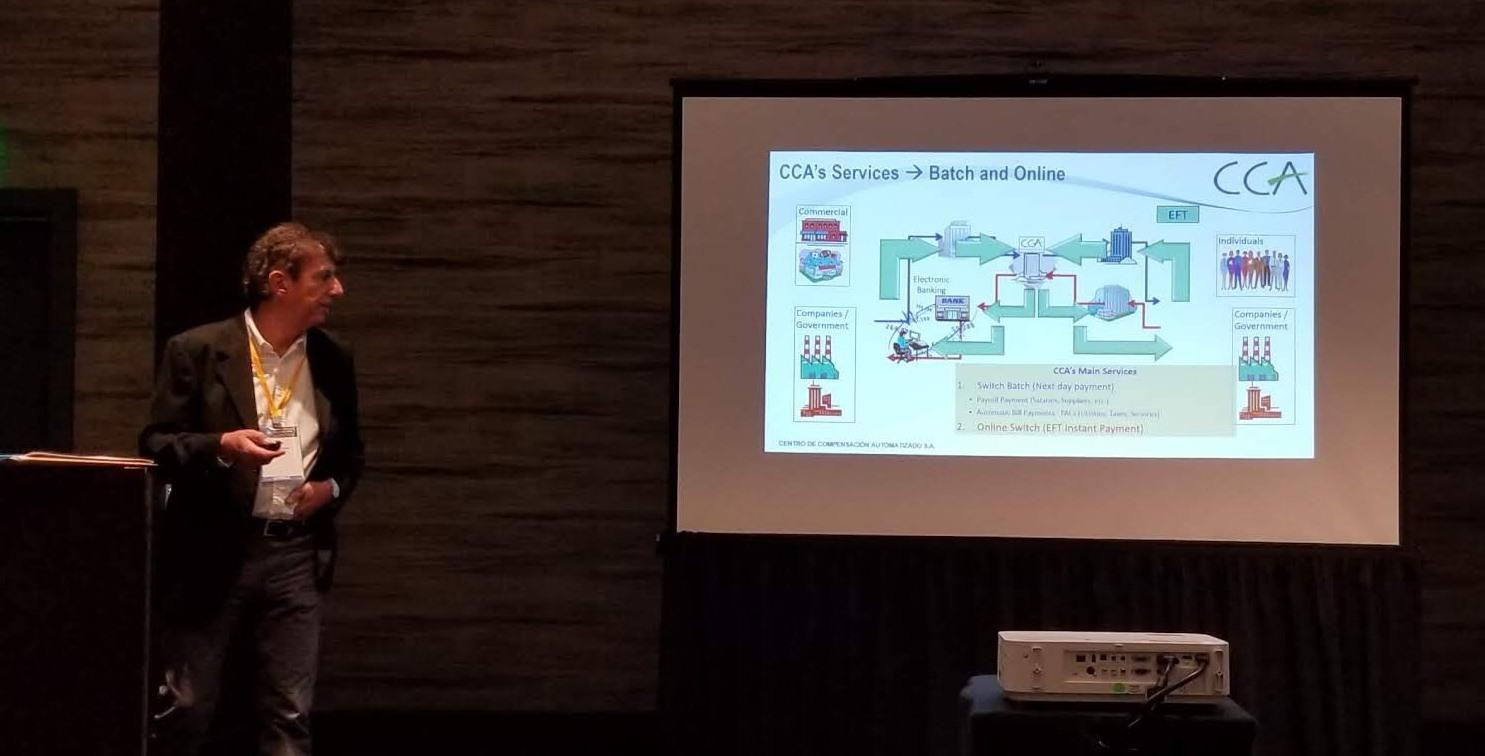
One of the great highlights of the NonStop Bootcamp
conference this year in San Francisco was the visit of Luis Feldman of
CCA Chile. Luis presented an outstanding example of how payments can be
modernized using OmniPayments solution.
CCA’s core business is to act as the clearing house
for payment transactions across the entire nation of Chile.
In their move towards greater adoption of Online
EFT, they now support a core of powerful services including
·
24x7 Internet Banking
·
24x7 P2P Payments
·
Immediate Availability of Funds to their customers
·
Payment guarantee to both sender and recipient
·
Electronic reconciliation
·
Increased security and authentication.
Electronic payments have increasingly been
replacing the use of more traditional and paper-based Checks. Given
that the writing of checks in Chile requires you to have sufficient
money to back the payment, or face criminal liability, the use of their
Faster Payments infrastructure has become a lot more popular. First of
all the bank will tell the sender whether or not funds are available
before sending; in fact it will not allow payments to go through without
the required positive balance in the senders account.
Secondly the recipient if the funds is in a
position to use the funds immediately. This move to electronic payment
increases both liquidity in the financial system so much, that
economists have calculated that it increases national GDP by some
additional 0.04% per annum and have helped add many thousands of jobs.
CCA supports the services of more than 15 banks in
Chile, with end-user clients including Banks, Governments, Consumers and
Merchant business of all kinds.
CCA’s online annual payment transactions count have
climbed at over 20% per annum from a figure of some 25 million to over
380 million in just over 10 years. With banks such as HSBC, Santander,
Bank of Tokyo, BBVA, BancoEstado, Banco Bice, Banco Falabella, Corpbanca,
Banco de Chile, ScotiaBank, Banco Itau and many others all depending on
the core services of CCA, the future of CCA looks bright indeed.
CCA’s Faster Payments infrastructure is underpinned
by OmniPayments core technology including its OmniSwitch secure message
delivery, OmniDirector, & OmniCrypto, which together all help to provide
a secure and scalable payments delivery platform. A growing number of
financial institutions globally now depend on OmniPayments to deliver
their payments globally. With support for the world’s major
interchanges and card schemes, OmniPayments is ideally placed to meet
the needs of any bank and retail organisation anywhere in the world.
OmniPayments can be viewed at
www.omnipayments.com or contacted at
Sales@omnipayments.com
Raymond James selects ETI-Net for virtual tape support for a second
time!
Raymond James can best be described as a diversified financial services
holding company with subsidiaries engaged in investment and financial
planning, investment banking and asset management. The company has seen
the usage of NonStop systems change and grow through the years up to the
point where today NonStop became the main system to record all holders’
accounts, trades and exchanges run on their behalf, as well as the
repository for equities, mutual funds, bonds, annuities.
With business growth playing out against a backdrop of disruptive
technology changes, IT moved from traditional centric computing to
client-server oriented systems, reaching today the technology to support
applications as services. Raymond James’ Senior NonStop System Engineer
John Trizis noted that not only the NonStop systems themselves, but also
thousand plus Windows servers along with the increasing usage of
virtualization changed the way we backup and recover our data.
It became obvious that we simply had to reduce our dependency on
physical tapes and to explore more options towards the transition from
physical to virtual tape management, as the technology of NonStop
systems allows to eliminate the tape without any major impact to the
applications.
Raymond James had a backup system in Michigan that has been replicated
and moved over to a state-of-the-art data center outside of Denver,
Colorado. As a result, any project involving virtual tape now spanned
multiple sites, spread half way across the country. “A team was put
together for the project and I was part of that main team. At that time,
Raymond James was still doing backups to tape and moving them offsite,
spending lots of money on tape libraries and on tape transportation back
and forth between data center and its storage facility”
explained Trizis.
“Shortly after I joined Raymond James the company came into contact with
ETI-NET,” said Trizis. “To me it was clear that Raymond James needed a
new storage paradigm and an efficient file management software in order
to handle the amount of data stored across different datacenters. The
solution had to consider that the source would be a NonStop system that
wouldn’t detract in any way from the system’s fault tolerance or lessen
the availability of the application to Raymond James users.”
At the time of the
PoC back in 2008, Raymond James was running five NS16000 systems and ETI-NET
BackBox came into the picture to meet all Raymond James’ requirements
fully leveraging the existing Raymond James infrastructure . The
transition to virtual tape went as smoothly and fast as possible. And so
it began the long collaboration with ETI-NET that Raymond James
continues to enjoy up to this day.
The benefit of having
developed a strong working relationship with ETI-NET was that Raymond
James was able to turn to them for assistance and support when it came
time to upgrade to the NonStop X.
“There wasn’t any hesitation on the part of ETI-NET to support us.
Unlike other NonStop vendors we had worked in the past with who were
slow to move their products to NonStop X, ETI-NET did the upgrade fast
and efficiently. So we had no concerns whatsoever about the ability of
ETI-NET to support us,” added Trizis. “Yes, we did look at other vendors
in the NonStop space, but given our history with ETI-NET, we felt
confident that staying with them was our best course of action.”
Whereas Raymond James had previously relied on the three Itanium blade
systems, the business growth experienced by the company drove the
decision to increase the number of NonStop systems to be deployed.
“Stepping up from the two-dual core NB54016 systems and the one dual
core NB54008 and bringing in to Raymond James two 10 CPU NS7 and two 4
CPU NS7 systems was a significant increase in performance,” noted Trizis.
“Important for the business, on the other side, was how the data has
been archived and purged: deleting archived data from seven years ago
it’s being done by purging 100MBytes of data. When it comes to archiving
today’s data we were talking terabytes, which is thousands times more
than 7 years ago. Raymond James had to recalculate its storage needs not
only for the present backups and archives, but also for the future. And
again, this is where working with ETI-NET really helped.”
When approached about
the upcoming migration, ETI-NET COO, Sylvain Tétreault, said, “Having
built the relationship with Raymond James over the course of a decade,
we were in a strong position to help them with the virtual tapes; we
knew just how much data was going to be involved and we built our
strategy based on the capacity to handle large amount of data. That’s
why, for us, it was very important to continually improve the
performance of the BackBox in order to be prepared to meet our
customers’ increasing backup volume.” “We have tested and validated
BackBox with NonStop X and Raymond James saw no change in the way their
applications run after the upgrade to NonStop X.” Raymond James just
completed the migration and it was a great success due to strong
planning and due to a product with high performance.
A decade ago, Raymond James moved from physical tapes and tape drives to
virtual. “No modernization effort could seriously be addressed, if we
were still chasing tapes on a daily basis,” acknowledged Trizis. NonStop
systems remain central to everything Raymond James does these days.
Migrating to NonStop X represents a deepening of the reliance on NonStop
systems.
As for ETI-NET and BackBox, “we found the company and its products
making a major contribution to the increased usage of applications on
NonStop. Raymond James is both thankful and impressed by the way ETI-NET
dealt with the data migration” said Trizis.
Register Now for NuWave and TIC's Blockchain TBC Recap
If you weren't able to
make it to Boot Camp or you missed NuWave's presentation on integrating
your applications with R3 Corda, not to worry!
NuWave and TIC have
you covered with their blockchain TBC recap webinar.
In summary,
HPE's partnership with R3 has given us Mission Critical Distributed
Ledger Technology (MCDLT) on NonStop.
This is great
news for new DLT applications, but what if you want to integrate
your existing NonStop applications with Corda? This webinar will show
how REST-based middleware can be used to quickly bridge the gap between
these two environments.
There will be sessions
on December 6th and 7th. Register now at
https://attendee.gotowebinar.com/rt/3464595618922523659.
If you would like to learn more about integrating
your NonStop applications with Corda, reach out to us at sales@nuwavetech.com.
Everything in one Place
Software and technology companies
operate in one of the most rapidly evolving industries of all, with
immense shifts in development, infrastructure, customer expectations and
business models. The ability to continually keep pace with these changes
whilst grappling with fragmented business systems, siloed data and
manual processes is increasingly hard.
The ability to consolidate information
and make sense of relevant data streams is something that keeps many a
CIO up at night. And this isn’t just limited to managing “big data”.
We’re seeing an increasing trend of tools that offer a new look at
workflow collaboration. Digital business demands a high degree of
collaboration agility to improve team coordination. Slack, HipChat,
Trello: these are relatively new tools that employ a SaaS model and aim
to improve visibility of where workstreams are at any given time.
For any of these services to work
effectively, a clear and concise dashboard is critical.
The advent of open source, back-end
platforms such as Prometheus and Elasticsearch, has enabled developers
to focus on innovation rather than the burden of maintaining expensive
hardware and software. Core metrics are displayed in traditional
graphical format, but these are largely relied on by the developers
themselves. The end users, for whom the product has been built, need a
go to tool for communicating insights about a piece of data. Databoard
and Tableau have recognised the desire for visualisation and offer an
easy and scalable approach.
The importance of presenting critical
information in graphical format has been a core component of our product
development when it comes to NonStop monitoring.
The Reflex Graphical Console is known
as the OverDrive Status Monitor. The view represents the overall status
of single or multiple NonStop nodes, whether H, J, or L-series or a
combination of all three. OverDrive helps an installation to manage
their NonStop nodes and active services by providing a graphical view of
nominated exception conditions. Installations that need to manage their
network other than “by exception” can witness a richer EMS event stream
by using the OverDrive top-level views in conjunction with the
graphical, text based Console facility. The OverDrive display is made up
of columns known as Classes, and within classes, icons that can
represent an underlying group of objects, or a single object. Classes
can be built to represent the NonStop subsystems, services and local
user applications.
The structure of this display is
completely at the discretion of the user. The most common approach is to
create either status or service views. Status views are Operations
driven where groups of “like” things, such as disk, spoolers, Pathways,
Applications are assembled into the same class. A service class however,
could contain a set of process icons, a set of file icons, a spooler
device and a specific communications line, all of which support an
application. Both approaches are acceptable and it is possible to
implement both and have the same icon in more than one class.
Icons can represent physical objects
such as a communications line or a state such as “TMF Hung Transaction”.
Icons in the OverDrive display can flash either blue (vulnerable) or red
(down). Vulnerable is meant to illustrate that a service is continuing
but that it is threatened. If no flashing icons, then your system is
‘healthy’
This simple, yet highly effective
visual interface ensures that NonStop operators can see exactly what is
happening with the environment and act accordingly.
Reflex is trusted by some of the
world’s most demanding organisations. We would welcome the opportunity
to discuss its capabilities and how it should be a consideration for
anyone moving to NonStop X.
Dave
Shields
Principal Consultant
+44 161 876 6606
www.insidertech.co.uk
GDPR & TW
GDPR: On 25th
May 2018, a new European Union (EU) data protection law, the General
Data Protection Regulation (GDPR), takes effect. The GDPR gives
individuals in the EU more control over how their data is used and
places certain obligations on businesses that process information of
those individuals. We are updating our Policy to take into account the
new requirements of the GDPR.
In accordance with this we
need your permission to continue to send you emails relating to the
Nonstop World (Tandemworld) Limited eNewsletter and the products and
services that you can purchase from Nonstop World (Tandemworld) Limited
Preferences
It is extremely important
that you update your preferences with us, to comply with the new GDPR
regulations – simply click one of the following links, to confirm your
mailing preferences.
The only data we collect
and hold is your email address. We collect no further information.
CONTINUE
Risk
Management in the Real World: Today, Tomorrow and Beyond
2018 was another troubling year in
the cybersecurity world. We saw a repeat of last year’s data breaches on
a larger scale. Google, Toyota, Facebook, Under Armour, LifeLock, Air
Canada, Blue Cross and many, many more fell victim to some sort of
compromise. Hardly a week went by where we weren’t reading about a new
mega breach. Even the popular online video game, Fortnite, was hacked
and children’s personal data was found for sale on the dark web. No one
was off limits. It’s to the point where we’ve become numb to the news;
we shrug it off and move on. But as consumers, we should be concerned
with the lackluster cybersecurity practices companies have in place.
It’s clearly not protecting our data.
A ZDNet article recently mentioned
“Researchers at security firm Positive Technologies, tested 33 websites
and services using its proprietary application inspector and found that
banking and financial institutions were “the most vulnerable” to getting
hacked.”
Companies spend billions on
security each year, yet why is this still an issue? It’s almost 2019 and
still most applications are horribly insecure and security best
practices are not followed. Applications are designed for functionality,
not security because security is seen as difficult and time-consuming,
often blamed for adding delays to product launches and revenue
generating activities.
Passwords: The Achilles Heel
One of the most critical security
risks to any organization are passwords, especially default passwords
and passwords to privileged accounts. Privileged accounts have elevated
access to perform administrative functions. They can be administrator
accounts, service accounts, database connection accounts, application
accounts and others. Most of these accounts were set up ages ago when an
application or system was deployed. They typically have multiple
integration points and because of the risk of “breaking something,” the
passwords for these accounts are rarely rotated, likely shared and
improperly stored.
In today’s ecosystem where privileged account abuse is the most common
way for hackers to compromise a system, proper credential storage and
accountability is paramount to risk mitigation. Relying on manual
methods….. [click
to read the rest of the story
NEW DATE: Registration Open for the Rescheduled MATUG
Fall Users Meeting
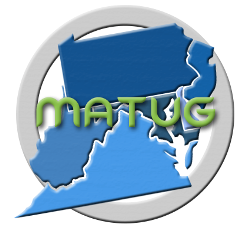
If you are unable to attend
the Technical Boot Camp (TBC) in San Francisco next month, then the
Mid-Atlantic Tandem User Group (MATUG) Meeting is a great opportunity to
see the HPE NonStop roadmaps first-hand and to hear all of the latest
news from the TBC on NonStop development, product management, and sales.
Please register via EventBrite
for the MATUG Meeting rescheduled for 8am-5pm on Tuesday, December 4,
2018 at the
DoubleTree by Hilton Hotel Baltimore-BWI
Airport near Baltimore,
MD, USA. To book a room at the MATUG block rate:
http://doubletree.hilton.com/en/dt/groups/personalized/B/BWIBADT-GRI-20181203/index.jhtml
MATUG provides members with the opportunity to participate in quality
informational sessions, learn about new HPE products and services, and
interact with fellow HPE NonStop users. Expect informative presentations
from seven vendors and HPE on:
·
Connect NonStop
Technical Boot Camp Wrap-up
·
HPE Partnership
with Blockchain (Distributed Ledger Technology or DLT)
·
Application
Modernization: DevOps and Microservices
·
HPE NonStop HW/SW
Product Roadmap
The MATUG meeting is open to all HPE NonStop customers, partners, users,
consultants, or interested parties. Members are usually from the
following states: Pennsylvania, New Jersey, Maryland, Delaware,
Virginia, Washington, D.C., and West Virginia, although anyone can
attend.
Please forward this
announcement to others in your organization who may be interested in
attending.
Contact us
if you have any questions. We look forward to seeing you!
Why
Cyber Criminals Are Turning Their Attention to Healthcare
Cybercriminals
have been turning their attention to the 3 trillion dollar a year
healthcare industry. These cyber-attacks make payment data look like
petty theft as healthcare data becomes increasingly more profitable than
that of credit cards.

In the wake of the most recent
Healthcare.gov breach,
cybersecurity in healthcare has become a top safety issue. The hack left
75,000 individuals exposed after data from the Centers for Medicare and
Medicaid Services (CMS) was stolen,
A recent
IBM Study determined that the
healthcare industry was able to detect a data breach within 367 days, on
average. Some companies have even been hacked for a length of two years
without the realization of a breach. That is enough time for hackers to
collect hundreds of thousands of personal and medical information files
that clients have willfully provided to their medical provider or
medical center. This can include an individual’s social security number,
medical history, and even prescriptions. With this information in hand,
cybercriminals can commit identity theft, insurance fraud, and even sell
prescription drugs on the black market.
Some healthcare companies are unaware their systems were even hacked and
only learn about the incident when:
-
It is reported in the news
-
They receive calls from their
customers
-
The F.B.I. informs them
Other companies may be fortunate
enough to know that they have been hacked, but they lack the resources,
tools, knowledge, or time to investigate the breach. To prepare for the
potential threat of a cyber-attack, professionals must now know how to
develop and apply an incident response plan.
The Incident Response Plan
After the breach has occurred,
the response team now has a long road ahead to patch up. Building your
Incident Response Plan includes:
●
Preserving Evidence: Mistakes are
made when you don’t have a proper incident response plan. Typically,
a technician will
want to start to rebuild servers, delete
files and unplug equipment to start
running the system again. This is the
worst thing to do! By getting rid of
all the evidence, traceability and the forensic, nothing is left that is
needed to find out what and how it happened. Conserving the information
is critical when there are regulatory
bodies that need reporting, government agencies, shareholders that
require forensic evidence of what happened and how it can be prevented
in the future.
●
Identify
Potential Risks:
Understand the latest threats to healthcare and educate your employees.
Ransomware such as “Click this to redeem your $100 Amazon gift card” is
frequently used to
target administrative workers and when successful, can access encrypted
patient records. Regular, company-wide
education can help limit those risks.
●
Set up your response team: Once a
company has been breached, build
a team to help relay the message. This may include the IT Director or
CIO, Communications Manager and the
HR/Legal Department. Understand what
message you will need to deliver to the public.
An Ounce of healthcare
cybersecurity prevention is worth a pound of cure.

Targeted attacks can come from
anywhere in the world. Cybercriminals can be sitting thousands of miles
away and gain access to medical records, social security numbers, next
of kin, and much more invaluable information.
The challenge of protecting
sensitive data is not only a concern only for credit card companies. The
extremely sensitive nature of Personal Identifiable Information (PII),
Personal Healthcare Information (PHI) and medical records make them
valuable and have thrust the Healthcare Industry right into the
cyber-security spotlight. Implementing the proper security
infrastructure for the ongoing protection of this data is no longer a
nice to have, but a critical requirement.
With so much at stake and the
ramifications of a healthcare breach so damaging, why isn’t more being
done about it?
Ask TandemWorld
Got a question about NonStop ?
ASK Tandemworld
Keep up with us on
Twitter @tandemworld
We are currently seeking skilled resources
across the EMEA region,
contact us for More Info
www.tandemworld.net
TIC AWS Gateway (TAG) connects
NonStop to the Amazon Cloud
Cloud computing has become the new normal
as companies of every size have realized its benefits.
For most organizations, the question is no
longer “if we should?”; it’s “how can we move?” and “when can we
expand?”
NonStop applications can benefit from
cloud expansion and with TAG from TIC and Canam Software.
TIC AWS Gateway (TAG) provides an easy path to move/copy data from
NonStop to the Amazon Cloud, where you will immediately gain access to a
complete set of tools and services.
TAG suite has two components: DataLoader and Shadowbase
Connect, learn more:
http://ticsoftware.com/TAGAWS.aspx
For more information,
please contact
Sales-support@ticsoftware.com.
Tributary Systems, Bootcamp, and Generations
By Glenn Garrahan, Director HPE Business, Tributary
Systems
Tributary Systems, along with many other HPE NonStop employees and
Partners, gathered on November 11th in the San Francisco Bay
Area for the 2018 NonStop Bootcamp. In fact, as I write this, the
festivities completed a little less than a week ago. As with all
Bootcamps, it’s a conference to look forward to, renewing relationships
with old friends, and meeting new folks who are committed to the
continuation of the NonStop Platform. Interestingly, while the overall
attendance for the 2018 Bootcamp was similar to that of 2017, there were
two new partners exhibiting in the Vendor Pavilion this year, in my mind
a very positive sign.
Prior
to the event, I was reviewing the information and schedule for the 2018
Bootcamp, and I noticed an event called the “Under 40 Pub Crawl”.
Hmmm….under 40 you say? So I got to thinking, if a person was born the
day the first Tandem/16 system was shipped to Citibank, 43 years ago,
they wouldn’t be eligible for the Pub Crawl at all! Clearly the NonStop
Platform has had a lifespan far longer than a lot of 1976 technology,
but it also made me realize that we’re not passing the “torch” to the
next generation (to paraphrase John F. Kennedy’s Inaugural Speech), the
next generation of NonStop Professionals is already carrying the
“torch”.
So what
does this mean for the NonStop Bootcamp? First, I think it guarantees
that this event will continue well into the future. HPE continues to
offer new versions of NonStop servers and Virtualized NonStop of course.
But if younger people aren’t interested in the platform, this will be
for naught. It’s worth noting that these folks were taking the time to
visit many partner booths. They understand that there’s a wealth of
collective NonStop knowledge and information available, most of these
Partners have been part of the NonStop “Ecosphere” for years. I’ve found
that these Partners are more than willing to share their experiences
with anyone that asks!
In the
case of Tributary Systems, we’ve been supplying HPE NonStop with
Backup/Restore Solutions for over two decades, and today we are the
exclusive OEM supplier of all Tape products and Library Management
software. And trust me; you don’t work with NonStop Backup/Restore for
over 20 years without accumulating a lot of experience, experience we’d
be glad to share with the next generation of NonStop Professionals.
I’d
like to encourage all NonStop Professionals to take a couple of minutes
and read what CIO Review Magazine has to say about Tributary Systems,
and our Flagship Storage Director product:
https://storage.cioreview.com/vendor/2018/tributary_systems
https://magazine.cioreview.com/magazines/September2018/Storage/#page=1
Storage Director is the simplest and best way to connect any NonStop
server to the Cloud for secure and high-performance Backup/ Restore
operations at the lowest cost.
So
from all of us at Tributary Systems, we had great and informative
Bootcamp experience, and hope all the attendees feel the same way.
As
always, if you’d like additional information on Storage Director, visit
www.tributary.com, or call Matt
Allen at 817-786-3066 (office) or 713-492-7434 (cell).
Storage Director allows NonStop professionals to “augment what they have
and use it in creative new ways!”
www.tributary.com
NonStop
TBC 2018 Recap
It's
been an exciting show season this fall and CSP has been on hand at many
of the North American Chapter TUGs, including ATUG, CTUG our first ever
visit to MexTUG, and most recently the NonStop Technical Boot Camp
2018!. We've had a great time seeing familiar faces and meeting new
people at each of these events.
CSP
was proud to be a Diamond Sponsor of the 2018 NonStop Technical Boot
Camp, which took place at the Hyatt Regency, San Francisco Airport Hotel
from November 12-14.
C SP hosted
the
Connect 10th Anniversary Party & Welcome Reception at
the Grand Peninsula Foyer on Sunday, November 11th to kick-off the show.
This event was a great success and attendees were able to mingle and
catch-up while enjoying drinks and hors d'oeuvres prepared specially for
this occasion. The party was followed by the CSP Beer Bust at the Grand
Peninsula Ballroom, where the celebrations continued until late evening.
This
was also CSP's 30th anniversary! We are proud to be a part of the
NonStop community and would like to thank everyone who attended these
events and helped celebrate with us.
 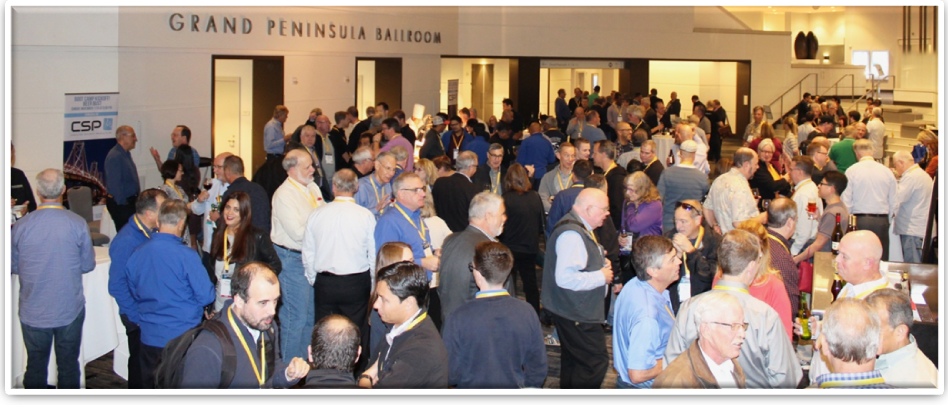
Technical Boot Camp is also an opportunity to showcase some of the
latest innovations developed for NonStop systems. CSP took this
opportunity to announce an exciting new solution for supporting
Multi-Factor Authentication on NonStop systems,
CSP Authenticator+. Multi-factor
authentication has increasingly become a critical compliance requirement
for NonStop and CSP Authenticator+ will help secure your critical
applications and sytems.
Our
presentation, "Multi-Factor Authentication on NonStop", given by
Marketing Manager, Henry Fonseca, took place in the Grand Peninsula
Ballroom and received excellent reviews. We had a great turnout and
would like to thank all those who joined us.
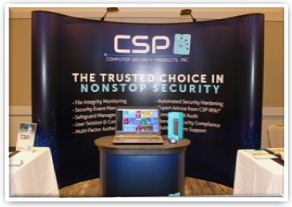
It's safe to say that TBC 2018 was one of the best
editions in recent memory, and CSP is always happy to support this
event. These are exciting times for the NonStop platform and there are
many great opportunities ahead. We look forward to seeing you in 2019!
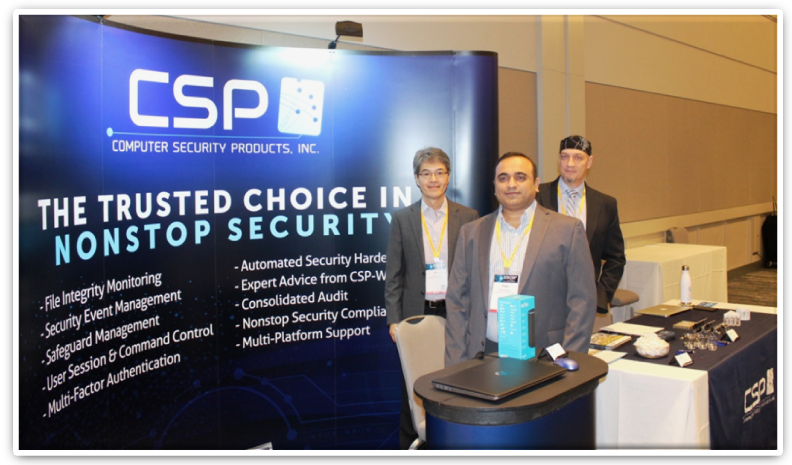
For more information on CSP solutions visit
www.cspsecurity.com
For complimentary access to CSP-Wiki®,
an extensive repository of NonStop security knowledge and best
practices, please visit
wiki.cspsecurity.com
We Built the Wiki for NonStop Security
®
Regards,
The CSP
Team
+1(905) 568 -
8900
Visit the XYPRO
events calendar to see
where we will be and sign up for free webinars

Belgium NonStop User Group Meeting
December 4, 2018

BITUG Little SIG @ Lloyds 2018
December 4, 2018
Lloyds Bank, 33 Old Broad Street, London EC2N 1Hz

Netherlands NonStop User Group Meeting
December 6, 2018

DUST (Desert Users of Tandem) Meeting
December 13, 2018
CVS/Caremark, 9501 East Shea Blvd., Scottsdale AZ

SunTUG – 2019 Sunshine Summit
March 1 – 2, 2019
The DoubleTree by Hilton, Tampa, FL
The 2018 NonStop
Technical Boot Camp was a huge success!

There were approximately 400
attendees: Customers/HPE/Vendors participating in the 3-day Conference
and Pre-conference sessions.
Over 70 Technical Presentations!
Many thanks to the Exhibiting
Partners!
|
4Tech Software |
ACI |
|
Ascert |
BlackWood Systems |
|
comForte |
Continuous B.V |
|
Crystal Point |
CSP |
|
ESQ |
ETI-NET |
|
FSS Technologies |
Gravic |
|
HPE NED |
Idelji |
|
IR |
Lusis Payments |
|
Marshall Resources |
Network Technologies |
|
NuWave |
OmniPayments
|
|
QSA |
Resource 1 |
|
Rocket |
TANDsoft |
|
TCM |
TIC Software |
|
Tributary Systems |
Utimaco |
|
XYPRO |
|
Fun
networking activities!
Sunday Night:
Connect
10th Anniversary Registration Reception
And Beer Bust! (Sponsored by
CSP)
Monday Night:
Networking Power Hour:
(Sponsored by Intel)
Women
in Technology Mixer
Pop-Up
Lounge: Security
Pop-Up
Lounge: Manageability
Pop-Up
Lounge: Virtualized NonStop
Pop-up
Lounge: Blockchain
NonStop Under 40 Pub Crawl
(Sponsored by NSU40)
Tuesday Night:
NonStop Community Celebration
(Sponsored by Connect)
And Maui Jim Sunglasses gift
A BIG THANK YOU!
To
Connect, Karen Copeland and Wendy Bartlett!
ANOTHER BIG THANK YOU!
To
Randy Meyer, retiring at the end of the year! The NonStop Community will
miss you
We look
forward to seeing everyone again next year at the Hyatt Regency San
Francisco Airport: November 3-6, 2019
Have a
safe and Happy Holiday Season!
Kathy
Wood
NonStop
Partner SIG/Vendor Chair
kwood@blackwood-systems.com
NWSI
For
those of you that have moved away from NonStop(tm) Tandemworld has
another division catering for other technologies around the NonStop(tm)
Systems
More
will be posted here and on the dedicated NSWI website soon.
Bookmark
www.nonstopworldinternational.com
Find out more about us at
www.tandemworld.net
Sponsored By
GOLD Sponsor
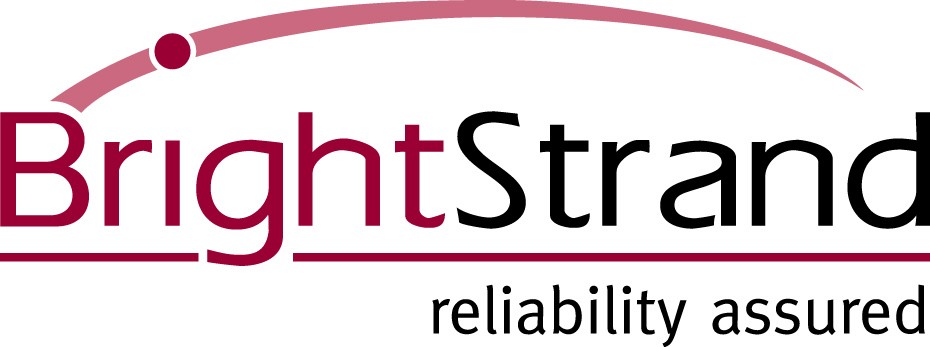
SILVER Sponsor

|
|
|

















